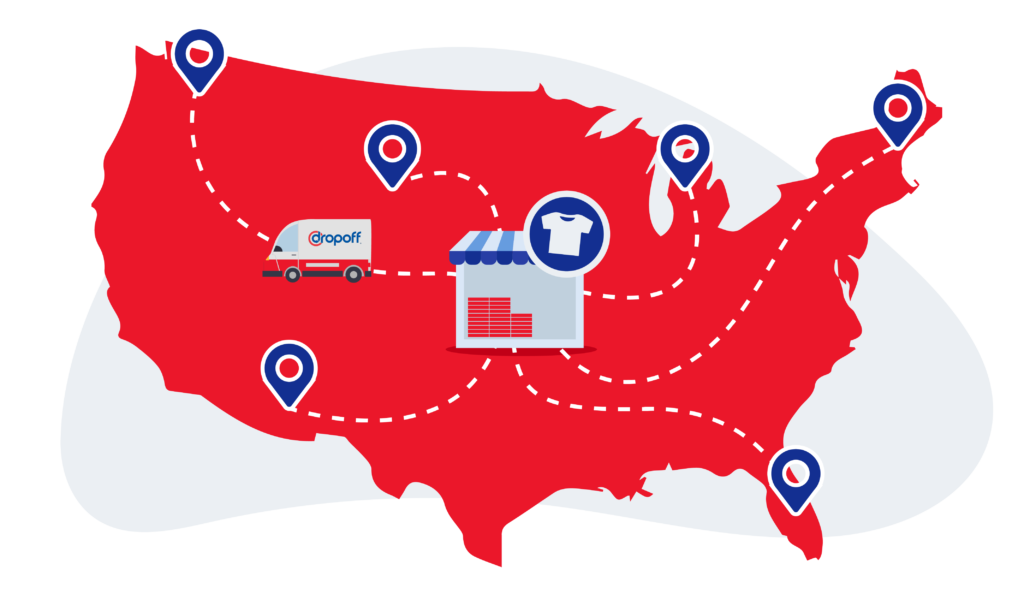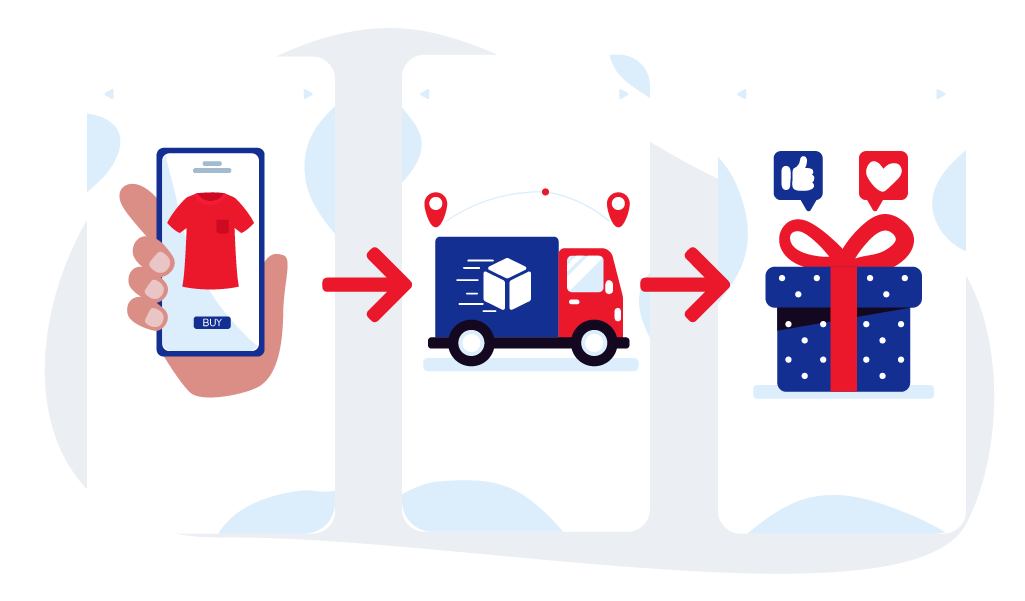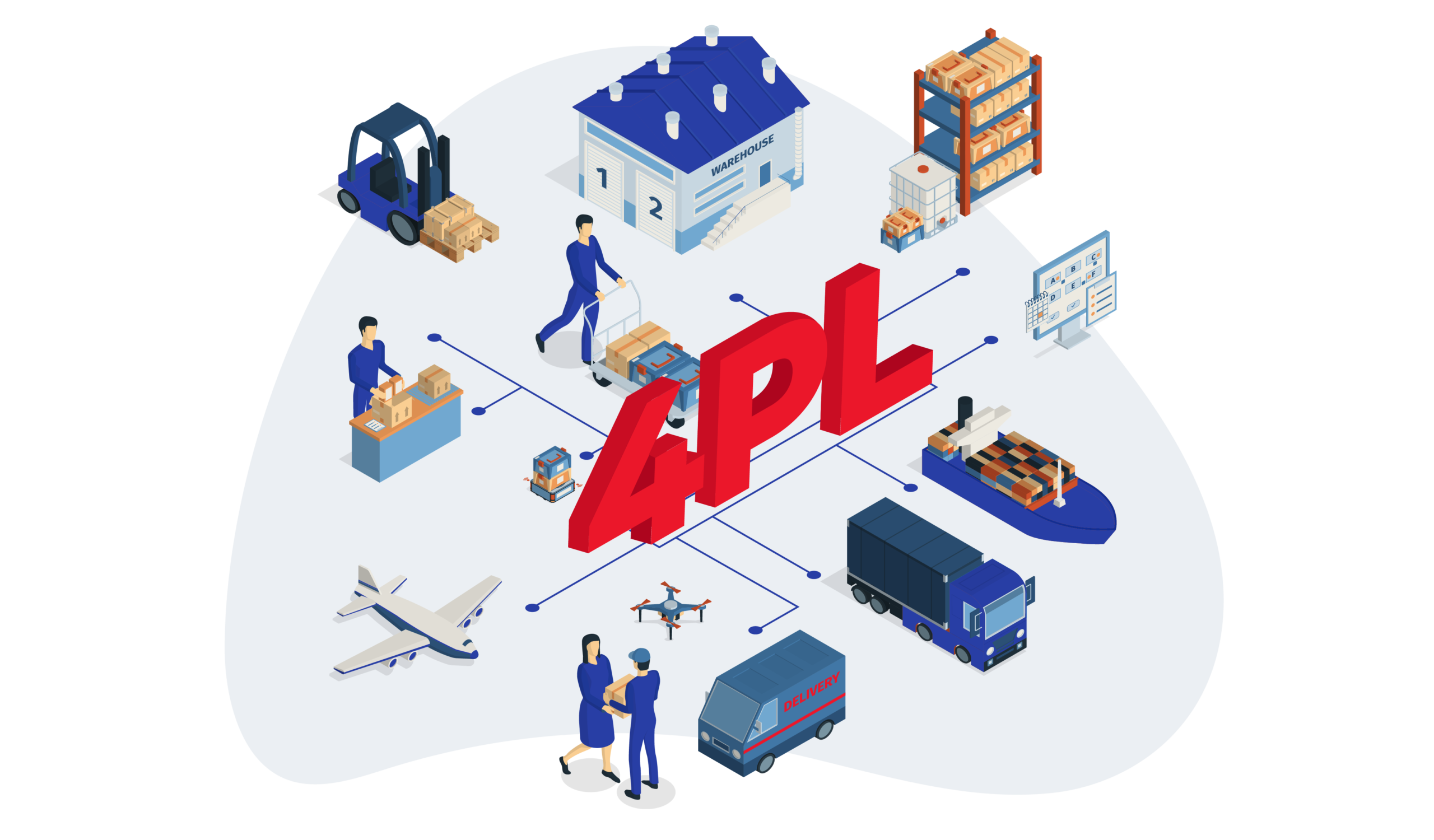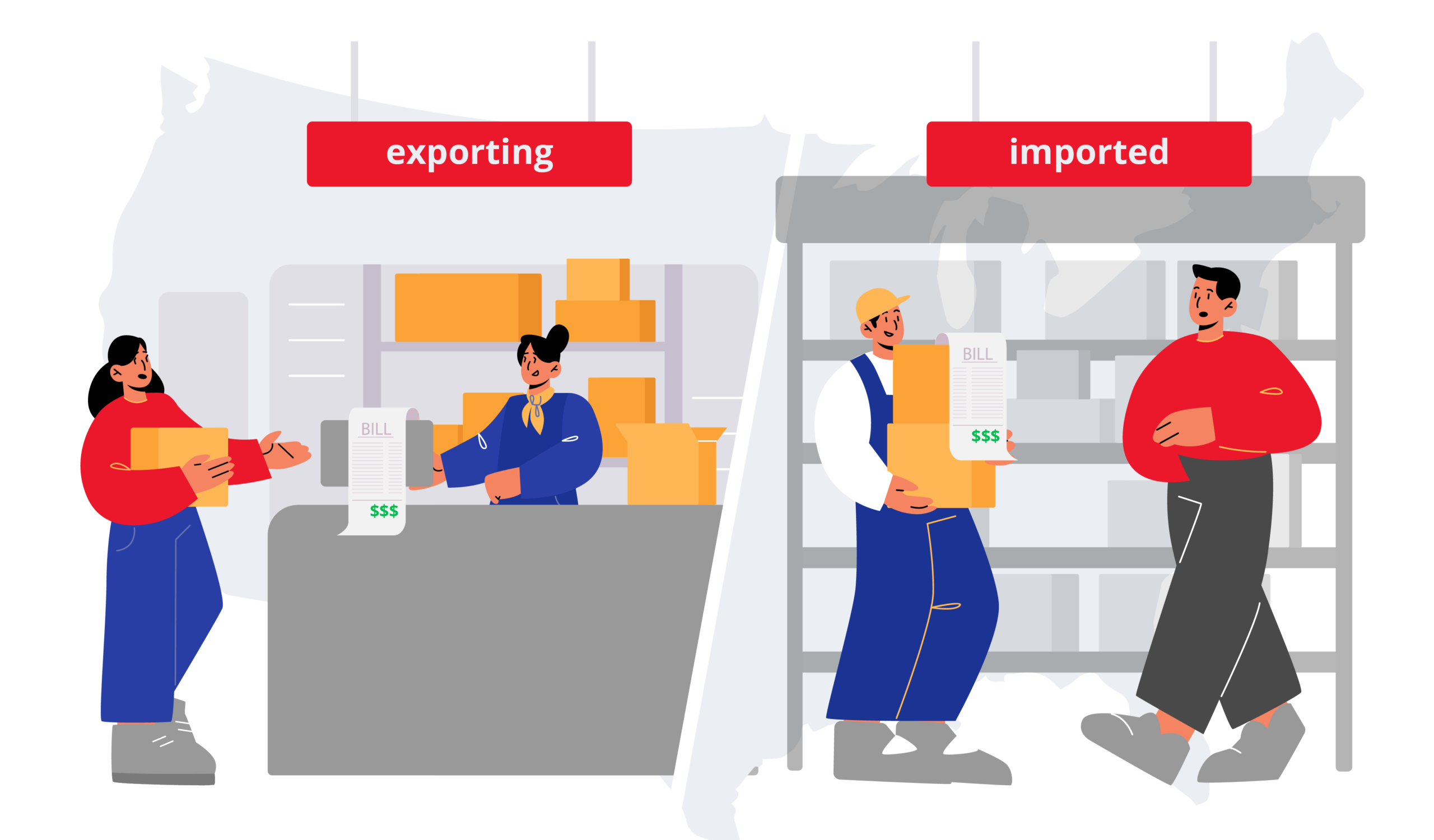What Is a General Rate Increase (GRI) In Shipping?

In the world of shipping, there are always changes on the horizon. Customers feel the most impact as more logistics companies announce general rate increases in their services.
A General Rate Increase (GRI) is an increase in shipping rates applied to all shipments, regardless of the service or class of service used.
This blog post will discuss what you need to know about GRIs, including when they happen and how they might affect your business.
What Is a GRI in Shipping?

“It’s almost the new year, and companies now have visibility to the 7% GRI coming from their current final mile providers. It’s important to ensure there is a clear understanding; the 7% increase is an average. Meaning you may have volume profiles where the increase is larger, upwards of 14%.
Many companies don’t think about alternative solutions, like Dropoff. If a company is shipping within city limits or spending for next day for shipments, a high-service final mile company like Dropoff can be a very competitive alternative and have a high recipient experience.”
Millie Tarallo, Chief Revenue Officer at Dropoff
General Rate Increase (GRI) is more common than you think in freight shipping. These increases happen when carriers need to raise rates across all or specific trade routes due to changes in the supply and demand chain. Bigger carriers initiate these increases during peak periods.
When carriers choose to implement a GRI, they are required by law to give shippers at least 30 days’ notice. Most carriers announce the rate increase on the first of the month, so it takes effect the following month. For example, if a GRI for shipping services is announced on June 1, it would go into effect no earlier than July 1.
Check out our guide on third-party and in-house fleet management!
3 Challenges Businesses Face with GRI Shipping

Whenever a logistics company announces a price increase, businesses that use their services will be affected. Even a tiny increase in rates may significantly impact the bottom line.
Here are three of the biggest challenges that businesses face when GRIs are announced:
1. Planning and Budgeting
Many businesses operate on tight margins, so an increase in shipping costs will eat into profits or force firms to raise prices, which hurts sales. As a result, businesses may need to re-evaluate their plans and budget for higher costs. Some companies may even be forced to scale back their operations or move to a new location.
Ultimately, any rate increase will throw off a business’s entire budget and pose a challenge for companies operating on tight margins.
Speaking of planning, check out our best tips on efficient logistics planning.
2. Negotiating Rates and Contracts
Once a major logistics company announces a GRI puts businesses in a challenging negotiating position. The GRI will typically start being incorporated into contracts, which means businesses may not be able to get the same rates that they were previously paying.
In addition, businesses may need to renegotiate contracts with their current logistics providers. This is a time-consuming process, and there is no guarantee that the provider will be willing to lower their rates.
However, remember that GRIs are often announced months in advance, giving businesses time to prepare and negotiate the best terms for their contracts.
Shipping doesn’t always have to be costly; ever heard of economy shipping?
3. Partnering with a New Logistics Provider
Businesses may even find it beneficial to switch to a new logistics provider. Of course, this is costly, especially if the company is already locked into a contract with its current provider.
Another challenge businesses may face is finding new logistics providers offering competitive rates. Given that rates vary so widely from one provider to another, it will take research to find a company that provides the services you need at a price you’re willing to pay.
Find out how outsourcing your logistics will benefit your business.
How Does GRI Work on Different Shipping Levels?

Shippers are responsible for the cost of shipping their products, so they need to be aware of how general rate increases (GRIs) work.
Let’s break down how GRIs work on different shipping levels.
1. International Shipping
Here’s how general rate increases (GRI) work if you’re shipping internationally. The increase is determined by evaluating the company’s overall costs, including fuel, labor, and regulatory compliance.
Once the carrier has determined the necessary amount, they will announce a GRI, which will become effective on a specific date.
Depending on the size of the increase, GRIs may have a significant impact on shipping rates. While rate increases are frustrating, they are essential for maintaining the viability of international shipping companies.
2. National Transportation
National transportation has two general rate increases: base rate increases and accessorial charges.
Base rate increases are percentage-based increases applied to the base freight charges, typically ranging from 1-5%.
Accessorial charges, on the other hand, are flat fees added to the total shipping cost for services like liftgate, ground, or residential delivery.
If you are a healthcare facility looking to hire medical delivery services, here is a thorough rundown of 2022 medical courier service rates.
3. Last-Mile Delivery
Last-mile delivery is the final leg of a shipment’s journey from the carrier’s terminal to the customer’s door. When GRIs are applied to last-mile rates, it significantly impacts shipping costs.
There are two main types of last-mile delivery: home delivery and business delivery. Home delivery GRIs typically range from 5% to 7%, while business delivery GRIs go as high as 9%.
In addition to these base rates, carriers also charge fuel surcharges, which are variable and will fluctuate from week to week. If a carrier charges a 5% GRI for home delivery and a $0.50 per gallon fuel surcharge, the total rate would be 5.5%.
To calculate the total cost of your shipment, multiply the GRI by your total shipping charges. For example, if you’re shipping a package that costs $100, the total cost with a 5.5% GRI would be $105.50.
Top 3 Ways of Dealing with GRIs in Logistics
While you may not be able to avoid GRIs entirely, there are some steps your business can take to soften its impact.
1. Change Your Current Logistics Provider
One of the most common ways companies attempt to offset shipping costs is shopping around for a new logistics provider. By clearly explaining your situation and providing them with data to support your case, you may be able to secure a lower rate.
You may also want to explore other options, such as outsourcing certain aspects of your logistics operation. Taking a proactive approach will help ensure that your company remains competitive despite rising costs.
2. Conduct an Audit of Your Operational Costs
Operational costs can quickly eat into profits. From fuel and maintenance expenses to employee salaries, there are many ways that charges add up.
One way to deal with the issue is to audit your operational costs. It will help identify areas where you may be able to cut back and give you a better understanding of where your money is going.
In addition, an audit will also help to identify areas where you may be able to negotiate better rates with your suppliers.
Here is everything you need to know about logistics optimization.
3. Offer More Premium Experiences for Customers
Companies should focus on offering more premium experiences for their customers. This includes faster shipping times, tracking information, or even real-time updates on the status of shipments.
By offering these value-added services, companies will increase their margins without passing on the entire cost to their customers. Ultimately, this is one of the best ways to deal with general rate increases in logistics.
General Rate Increases in 2023: What to Expect

Experts expect that general rate increases (GRIs) will be more common and larger in scope, affecting both ocean and air freight.
Here are a few GRI trends to look forward to in the coming year.
1. 2023 GRI Announcements
FedEx versus UPS
UPS and FedEx have been increasing their rates by 4.9% annually for nearly a decade, but they broke that trend for 2022 and announced a 5.9% increase. This increase shocked the industry, especially considering their customers’ struggles due to the pandemic and UPS’s already record-setting profits. Not to mention, the world may face a recession soon.
FedEx and UPS 2023 base price increases are similar and not by coincidence.
“The similarities of base price increases between the two aren’t a coincidence. If one of the carriers decided to implement lower rate hikes than its competitor, its network would be overwhelmed by a surge in demand that would hurt service levels. They will always be pretty similar, because right now, one of them can’t absorb significantly more customers than the other one can.”
Kevin Miller, Vice President of Data Insights at Sifted
DHL Express Follows Suit
Following behind, DHL Express announced price adjustments that will take effect on January 1, 2023. The average increase in Australia will be 7.9% compared to 2022.
“With the annual price adjustment, we are able to invest in our infrastructure and technology to ensure resilient, sustainable, and world-class customer solutions. It includes state-of-the-art aircraft and vehicles, expanding our hubs and gateways to meet increasing customer demand, and investing in green and more sustainable solutions, such as Sustainable Aviation Fuel and electric vehicles.”
Gary Edstein, CEO & Senior Vice President at DHL Express Australia
2. Increased Accessorial Fees
In 2023, carriers will continue to bring more shipments into the large category—shipments subject to additional Dimensional Weight Pricing (DIM) fees.
The DIM calculation shrank from 60 to 48 inches in 2017 but is expected to see further shrinkage in 2023. As of now, carriers have added that the addition of length plus girth should not exceed 139 inches.
Not only that, but we think there will be more rules around what defines “additional handling fees.” On top of all that, based on our belief, prices will likely go up according to which zone you’re in—costing even more, the further away you are.
3. Residential Last-Mile Deliveries Targeted for Increased Fees
E-commerce shipping has been growing at a record rate for a long time. And Covid-19 only accelerated this trend. To make its residential delivery service more efficient, FedEx chose to dissolve its partnership with the United States Postal Service (USPS).
However, FedEx isn’t the only one experiencing inefficiencies with residential deliveries. This type of delivery is the most costly and inefficient for carriers. On the other hand, B2B shipments are much more seamless and straightforward.
How Dropoff Addresses Your Logistical Needs
There’s no need to feel helpless when facing a logistics provider rate increase. You have options, and one of those is Dropoff.
We are a convenient, reliable, and affordable solution for all your same-day delivery needs. Our technology-enabled platform makes it easy to get real-time quotes, track your Driver’s progress and manage your account.
We also offer various value-added services, such as real-time tracking and white glove service. With Dropoff, your shipments will arrive on time and in perfect condition.
Talk with a Dropoff expert today to get started.
FAQs on General Rate Increase Shipping
General Rate Increase (GRI) is an extra charge for shipping that is added to the existing base rate. When there is a lot of demand for shipping, bigger carriers tend to raise their rates.
GRI charges to cover costs like fuel, new equipment, and employee salaries. When shipping rates go up, it’s usually because the GRI charges have gone up. Companies will often try to offset these charges by increasing their rates.
A delivery rate increase is when the price of a good or service increases due to the rise in the cost of shipping or delivery. This is caused by several factors, including fuel prices, staff costs, and new regulations.
2022 was an expensive year for shippers who weren’t prepared for higher annual rate increases. This year, a 5.9% general rate hike was common across U.S. carriers, higher than the 4.9% increase many applied in 2021.






